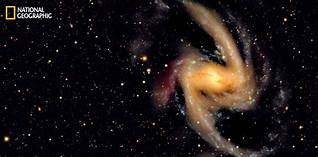The Andromeda galaxy, also known as Messier 31, shines in a newly released picture from the Zwicky Transient Facility in California.
 Our galaxy, the Milky Way, is destined to collide with its largest neighbor, a sparkling collection of stars called the Andromeda galaxy.
Our galaxy, the Milky Way, is destined to collide with its largest neighbor, a sparkling collection of stars called the Andromeda galaxy.
This cataclysm has been foretold by well-known physics, and astronomers know that when the space dust clears, neither galaxy will look the same: Within a billion years or so of first contact, the two will merge and form a much larger, elliptical galaxy.
But new measurements of stars within Andromeda, made by the European Space Agency’s Gaia space telescope, are changing predictions for when, and exactly how, that collision will go down.
As astronomers report in the Astrophysical Journal, the originally predicted crash date of 3.9 billion years from now has been pushed back by about 600 million years. And instead of a head-on collision, astronomers are predicting more of an initial glancing blow—kind of like knocking into a neighbor’s rear-view mirror.
“The overall picture is not too different,” says study author Roeland van der Marel of the Space Telescope Science Institute. “But the exact orbital pathways are different.”

